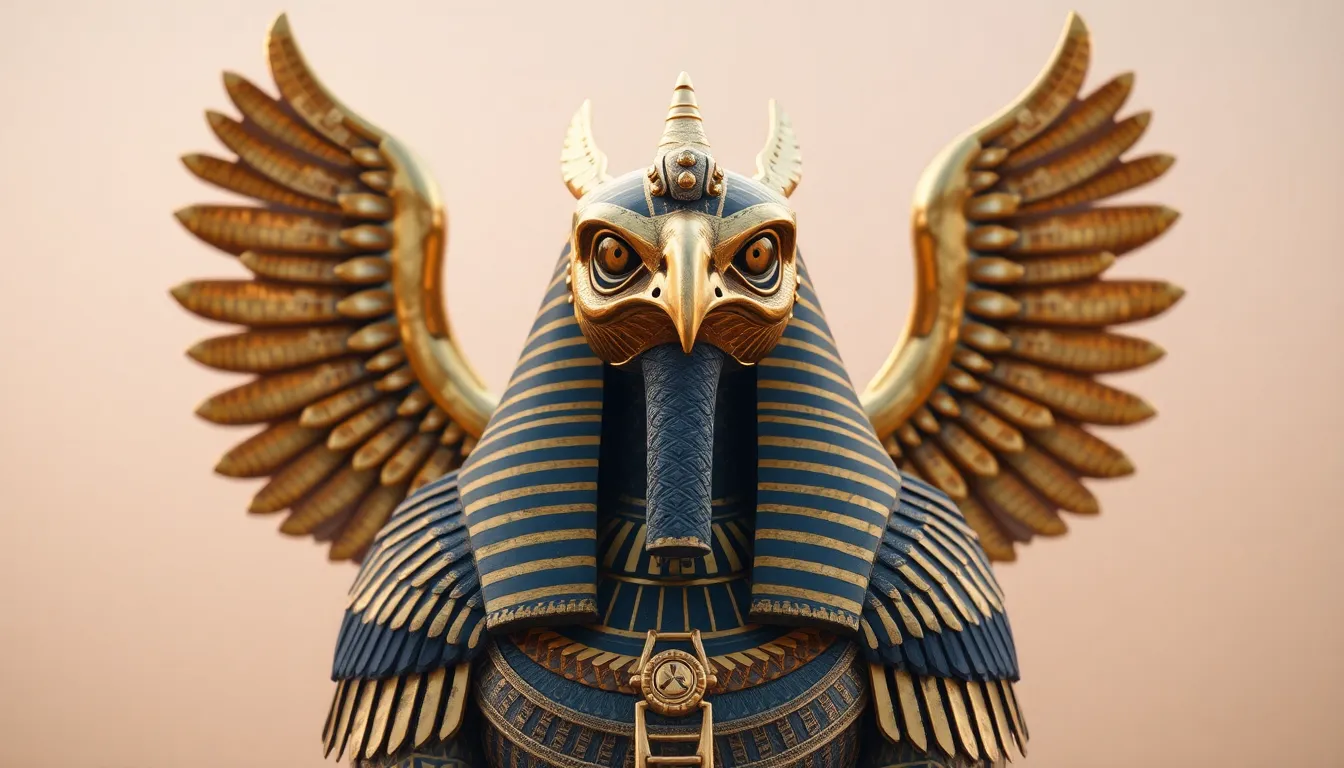Horus: The Falcon-Headed Protector of Pharaohs
I. Introduction
In ancient Egyptian mythology, Horus is one of the most significant deities, revered as the protector of the pharaohs and the embodiment of divine kingship. His image, characterized by a falcon head, symbolizes power, protection, and the divine right to rule. This article explores the origins, iconography, myths, worship practices, and lasting influence of Horus, highlighting his pivotal role in ancient Egyptian civilization.
II. The Origins of Horus
The mythological origins of Horus are rich and multifaceted, with various creation stories depicting his emergence. He is often considered the son of Osiris and Isis, embodying the resurrection and the cycle of life and death. The narratives surrounding Horus illustrate his importance in the Egyptian pantheon, where he serves not only as a deity of the sky but also as a symbol of kingship.
Horus’s relationship with other deities, particularly Osiris and Isis, forms a critical part of his mythology. Osiris, the god of the afterlife, represents the dead, while Isis, his wife and sister, symbolizes motherhood and magic. The struggle against Set, the god of chaos who murdered Osiris, further cements Horus’s role as the avenger and protector of his father’s legacy.
III. Iconography of Horus
Horus is most commonly depicted with a falcon head, which symbolizes his association with the sky and his role as a protector. The falcon was revered in ancient Egypt for its keen eyesight and hunting prowess, traits that were believed to reflect Horus’s vigilance over the pharaohs and the nation.
Various representations of Horus can be found in ancient Egyptian art and sculpture, including:
- Statues and reliefs in temples
- Papyrus scrolls depicting his myths
- Amulets and jewelry featuring his likeness
One of the most significant symbols associated with Horus is the Eye of Horus (Wadjet), which represents protection, health, and restoration. It is often used as a protective amulet, believed to ward off evil and ensure the safety of the wearer.
IV. Horus as a Symbol of Kingship
Horus’s association with kingship is profound, as he embodies the divine right to rule. The pharaohs were considered the living embodiment of Horus on Earth, and their authority was legitimized through this connection. Rituals and ceremonies involving Horus were central to the pharaonic regime, reinforcing the idea that the ruler was under the protection of the divine.
Key elements of Horus’s role in royal contexts include:
- Crowning ceremonies, where the pharaoh would be symbolically united with Horus
- The use of the title “Horus” in the names of pharaohs
- Rituals performed to ensure the pharaoh’s divine favor and protection
V. Myths and Legends Surrounding Horus
The mythology of Horus is rich with stories that illustrate his bravery and resilience, particularly his battle with Set. This epic conflict represents the struggle between order and chaos, a theme central to Egyptian beliefs. Horus’s triumph over Set not only avenged his father Osiris but also established him as the rightful ruler of the gods.
Interpretations of these myths reveal their cultural significance, as they reflect the values of ancient Egyptian society, including justice, loyalty, and the cyclical nature of life. Furthermore, Horus plays a vital role in the afterlife, guiding the souls of the deceased and participating in the judgment of the dead, symbolizing hope and continuity beyond death.
VI. Cult of Horus and Worship Practices
The worship of Horus was widespread, with temples dedicated to him throughout ancient Egypt. The most notable temple is in Edfu, which is one of the best-preserved temples from ancient times. This temple served as a center for rituals and celebrations in honor of Horus.
Festivals celebrating Horus included:
- The Opet Festival, which honored the union of Horus and Hathor
- The Beautiful Feast of the Valley, celebrating the return of Horus from the underworld
The role of priests and priestesses in Horus’s worship was crucial, as they conducted rituals, maintained the temples, and ensured that the divine favor of Horus was invoked for the pharaoh and the people.
VII. Horus in Ancient Egyptian Society
The influence of Horus extended beyond religion into daily life and governance. His imagery and symbolism were pervasive in Egyptian culture, appearing in art, literature, and popular expressions of the time. The concept of Horus as the divine protector of the state reinforced the idea that the pharaoh’s rule was ordained by the gods.
In literature and art, Horus was often depicted in scenes of combat, symbolizing his role as a warrior and protector. His presence in amulets and inscriptions was believed to bring protection and prosperity to households and communities.
Modern interpretations of Horus continue to resonate, as his image and symbolism are often invoked in discussions of leadership, protection, and divine right, showing the lasting legacy of this ancient deity.
VIII. Conclusion
In summary, Horus stands as a monumental figure in ancient Egyptian mythology, revered as the protector of pharaohs and the embodiment of kingship. His narratives, symbols, and worship practices reveal much about the values and beliefs of ancient Egyptian society. The legacy of Horus endures, influencing not only historical perspectives but also contemporary interpretations of leadership and protection. The relevance of Horus continues to inspire, reminding us of the rich tapestry of mythology that has shaped human understanding of power and divinity.




